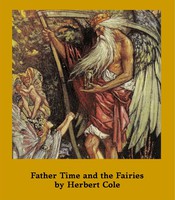Winter Solstice and Saturnalia
Posted by Elizabeth Hazel on 14th Dec 2015
Every year the Sun makes two turning points called “solstices.” Solstice is derived from the Latin words “sol” (sun) and “stice” (turning). The Sun is at the peak of its power at Summer Solstice as it enters the sign of Cancer, and provides the most hours of sunlight. The Sun is at its weakest at Winter Solstice as it enters the sign of Capricorn, and gives the fewest hours of light. Midway through these cycles are the equinoxes, when the hours of day and night are equal.
 Ancient skywatchers noticed the annual phenomenon of the
longest and shortest days and established rituals to coincide with them.
Solstice celebrations are extremely ancient – so ancient that they predate
written records. The evidence is embedded in existing Stone Age (Paleolithic)
structures that have stones or monoliths marking the Sun's turning points.
Stone Age structures are scattered around the globe, inferring that people of
all regions of the Earth acknowledged the solstices. It's simply not worth the
effort to heave enormous stones into place unless they mark something
important.
Ancient skywatchers noticed the annual phenomenon of the
longest and shortest days and established rituals to coincide with them.
Solstice celebrations are extremely ancient – so ancient that they predate
written records. The evidence is embedded in existing Stone Age (Paleolithic)
structures that have stones or monoliths marking the Sun's turning points.
Stone Age structures are scattered around the globe, inferring that people of
all regions of the Earth acknowledged the solstices. It's simply not worth the
effort to heave enormous stones into place unless they mark something
important.
The earliest surviving written records of the ancient world from Egypt, Mesopotamia, Asia, China, and Central America all show evidence of religions based on activity in the sky. Some cultures created religious calendars based on the Moon, while other cultures centered on the Sun. Some cultures had a fusion of solar, lunar, and star-based rituals.
Winter Solstice marks the Sun's entrance into Capricorn, ruled by Saturn. The Romans called their extended feast Saturnalia. The five to seven leftover (intercalary) days were essentially a “time out of time” because they didn't belong to a proper month. The normal order of things was turned upside-down. It was a pretty wild celebration! A Lord of Misrule was nominated from among the young men – usually a practical joker or a man known for his excessive behaviors. The Lord of Misrule was a temporary “king” who made sure that Saturnalia was filled with hilarity and disorder.
Religious rituals are invariably symbolic re-enactments of life-death-rebirth cycles that center on the locally-favored divine pantheons. Winter Solstice is the death-and-rebirth of the Sun. It travels through the underworld during the longest night and is reborn the next morning. Various deities acted as solar substitutes in the ancient world to die and be reborn at the solstice.
Winter Solstice rituals were pervasive through Europe, the British Isles, and the extended territories of the Roman Empire. When Christianity started to spread in the 4th century CE, it made sense to co-opt Winter Solstice for the birth of Jesus since so many religions already were celebrating the birth of some god or another. Through centuries of effort and often violent conquest, Christmas (Christ-mass) displaced Saturnalia and other cultural celebrations with the legend of the birth of Jesus at Bethlehem. Biblical and astronomical evidence suggests that Jesus was probably born in the early spring, but the traditions of Saturnalia were so deeply rooted that his day-of-birth celebration was by necessity shifted to a date close to Winter Solstice, December 25.
Pagan traditions surrounding Winter Solstice lingered for centuries in spite of vigorous efforts to stamp them out. Lords of Misrule and practical jokes persisted into the Middle Ages, much to the displeasure of church officials. Excessive feasting and heavy drinking were never eliminated. The importance of pine trees is extremely ancient. Other traditions were modified and new ones added, like the annual visit of Father Christmas/Saint Nicholas/Santa Claus, filling stockings with treats, and gift-giving.
Saturnalia is followed by January, named for the two-faced Roman god Janus who looks over the events of the past year and anticipates events in the coming year.

